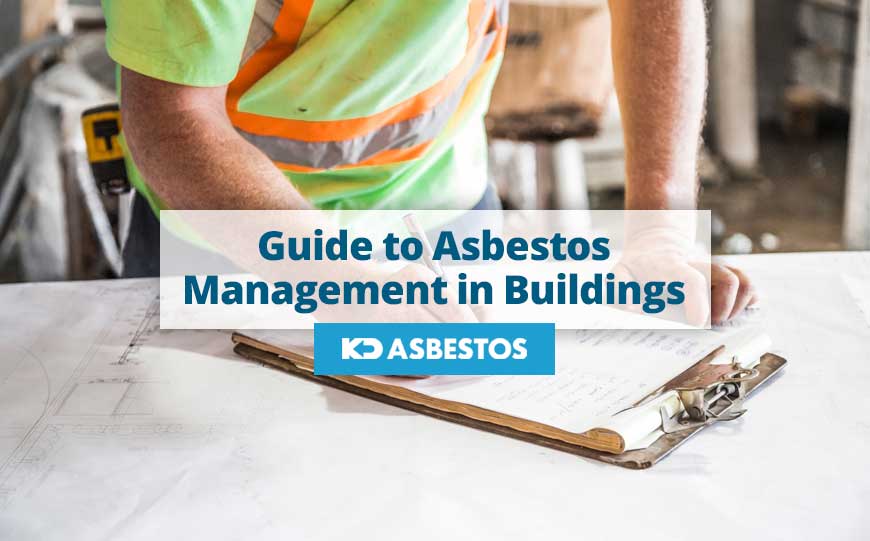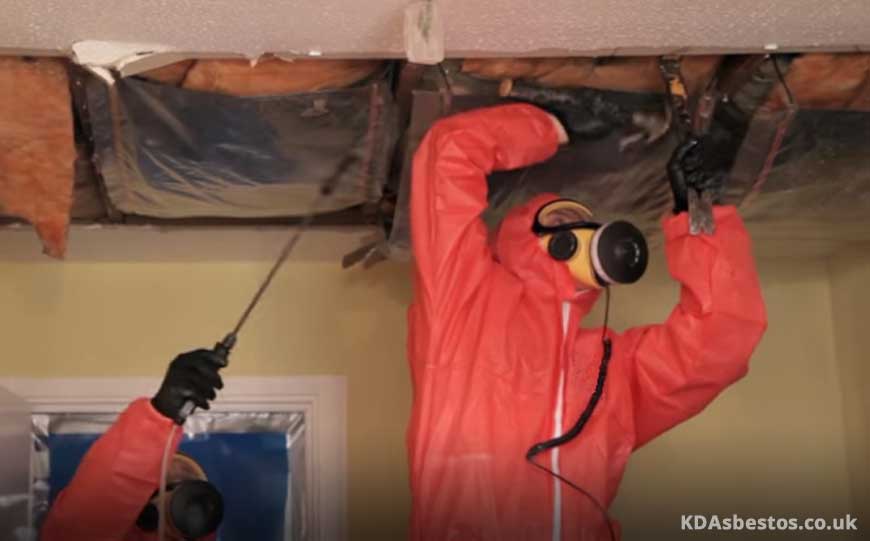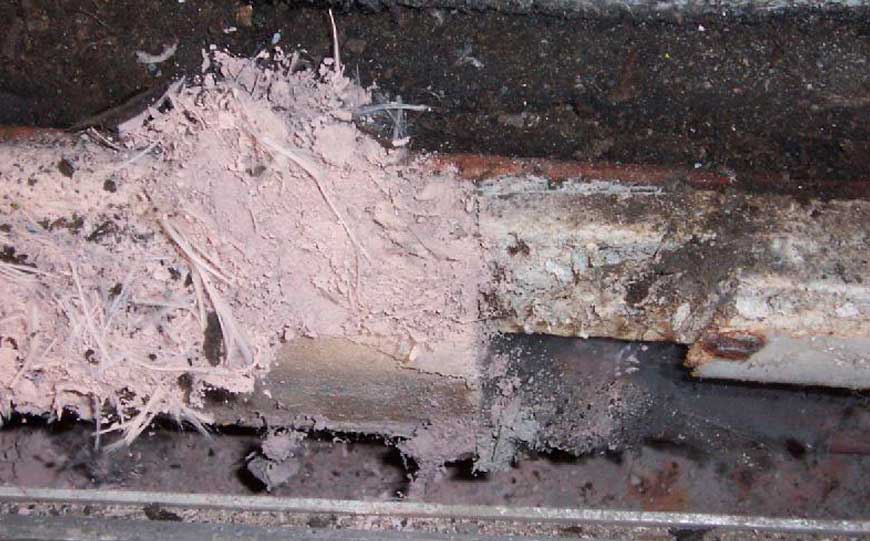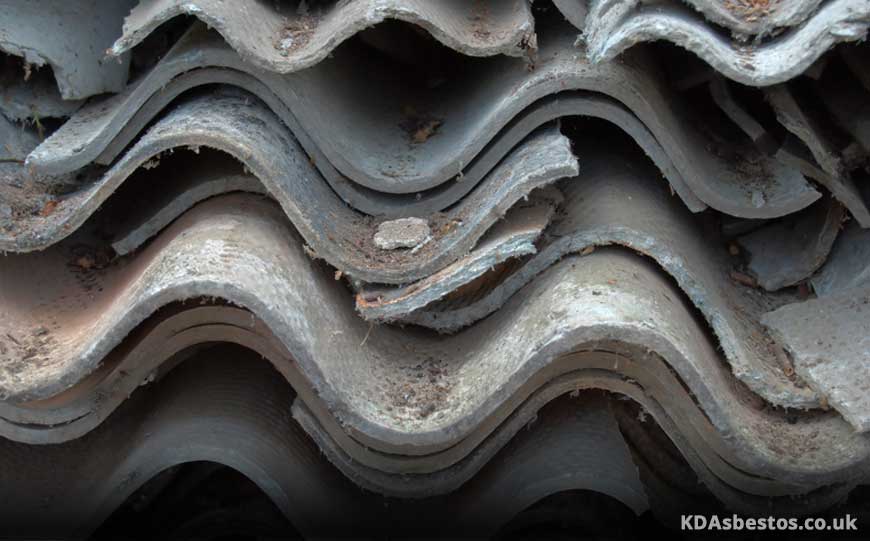
Asbestos management is of utmost importance, especially since it’s a known fact how hazardous asbestos containing materials are.
Hence, as a building owner or tenant you need to know your legal responsibilities in this regard.
Table of Contents
Why Manage Asbestos?
With the risks associated with asbestos in mind, you need to accept full responsibility for managing the material within the building.
Should those asbestos fibres become airborne, you would be putting employees or any other people at risk.
Inhaling or ingesting asbestos can lead to various serious health conditions, including cancer of the lungs and chest lining.
Unfortunately, asbestos is the reason why around 4500 people die every year in the UK, as a result of past exposure to the mineral.
There is a long period between the initial exposure and the time when the disease symptoms start to display.
This can vary between 15 and 30 years in most cases.
While it is now illegal to use asbestos in construction, sadly a lot of asbestos containing materials are still present in buildings which were built prior to the 1990s.
Blue asbestos (crocidolite), white asbestos (chrysolite) and brown asbestos (amosite) are still found in properties.
Typically they are found in tiles, roofing, and insulation.
Most work on asbestos containing materials requires a license.
Hence you need to be aware of whether this is necessary or not if you’re planning any renovations or other works which could lead to asbestos fibres being disturbed.
Minor works might be allowed to be carried out without a licence as long as the necessary precautions are taken.
But as a general rule, as long as asbestos-containing materials are still in good condition, it is often best to leave them in place.
But you must be aware of the importance of managing them accordingly.
Hence, careful inspection from time to time is recommended to check whether the material has become friable or started to deteriorate.
Who’s at Risk?

Asbestos is most serious if exposure is prolonged or over several occasions.
Hence workers who were exposed to asbestos regularly while doing their jobs are the ones who are most at risk.
This includes workers who carry out repair and maintenance work such as construction workers, demolition workers, roofers, plasterers, painters, plumbers, electricians, joiners, painters and engineers.
Common Places Asbestos is Found in Buildings?

Unfortunately, due to its properties, asbestos was used in several ways and in a wide range of products and materials.
The main aim was to make the material more durable and heat resistant.
The following are some common places and products where asbestos is found.
- Thermal insulation of pipes and boilers
- Asbestos pipe lagging
- Asbestos insulating boards (AIB) which were used for fire protection and thermal insulation. These were used as wall panels, partitions, and soffits.
- Sprayed asbestos used to improve fire protection of ducts and structural steel.
- Decorative plasters and paints
- Cement products, found in various products such as gutters, water tanks, pipes and wall cladding.
- Roofing products such as roofing felt and ceiling tiles
- Asbestos-containing floor tiles
High Risk Asbestos Containing Materials (ACMs)

Certain materials are considered to be more high risk than others.
When a risk assessment is carried out to evaluate how dangerous the particular material is, a score is given depending on the type and condition of the ACM.
If there is a high probability that asbestos fibres will be released in the air easily, even if a minor disturbance takes place, the ACM is given a score of 10 or more.
This signifies that it is a high risk material.
High risk ACMs include asbestos pipe lagging, asbestos insulating boards, and ceiling tiles.
These are more vulnerable to damage, and they are much more likely to give off asbestos fibres since they contain a higher percentage of asbestos than other materials.
Normal to Lower Risk Asbestos Containing Materials (ACMs)

Medium risk materials are generally given a score between 7 and 9, while low risk ACMs’ scores are assigned a 6 or lower.
Some normal to low risk asbestos containing materials include asbestos cement wall cladding, asbestos-containing floor tiles and asbestos cement.
In such cases only small amounts of asbestos fibres are present.
What Duty of Management Involves

The duty of managing asbestos is very important and it is even included in the Control of Asbestos Regulations.
If you are responsible for asbestos management for a particular property you need to tackle the following areas:
- Firstly, you will need to carry out an investigation as to whether there is asbestos in the property or not. If you have a suspicion that asbestos containing materials are present you need to act as if they really are until it is proved otherwise.
- You need to prepare and maintain an up to date record of the location where asbestos is present, along with its current condition.
- The asbestos containing material’s level of risk needs to be properly assessed.
- You are required to prepare a plan which delineates how you intend to manage the risks, with clear steps to be put into action.
- Once the plan is prepared you will then need to set out to implement it.
- Set up a system through which you can update anyone liable to work on the asbestos containing material, or who might disturb it.
Complying with Duty

The responsibility of complying with the duty of managing the potential risk associated with asbestos containing materials is yours.
So you need to make sure that you deal with this role properly.
Here are some key guidelines to help you in complying with this important duty.
Step 1: Is Asbestos Present?
You will need to verify whether asbestos is present.
Naturally the construction year of the property will be an important consideration here.
But you will also need to consider whether any renovations were carried out which could have resulted in the use of asbestos containing materials.
If the building was built or refurbished prior to the year 2000, it is best to evaluate whether asbestos is present.
It may be helpful to carefully walk around the building to evaluate all materials, and presumed ACMs.
Any areas which are not used or visited often will also need to be checked.
You may also wish to check the building plans, as well as any invoices which could shed light on the types of materials used.
You may also need to contact any architects, and past contractors who carried out work on the property, as they may be able to shed more light on this regard.
Step 2: Assessing Condition of Material Found
You will then need to assess the condition of any asbestos containing materials, or presumed ones.
This is to ascertain the likelihood that there is a risk that the fibres may be released in the air easily or not.
Check the surface of the material to see if it looks damaged or scratched.
If there are any sealants, check whether they are breaking off or peeling.
In some cases, the material may be getting detached from the base.
Check carefully whether there is any dust or other debris close to the material, as this could be a clear sign of deterioration.
Step 3: Asbestos Samples & Testing
At this point you will then need to hire a professional asbestos contractor to conduct a survey to verify the presence of asbestos.
The materials will be carefully analysed.
If asbestos is indeed present, the type and amount will be verified.
The condition of the material along with the best course of action will then be discussed.
Make sure that the service provider you hire can offer you evidence of his training and experience.
This should be accompanied by proof of accreditation and certification to carry out asbestos related work.
The United Kingdom Accreditation Service (UKAS) runs an accreditation scheme for companies that carry out asbestos surveys.
Step 4: Taking Records
Keep a record of the asbestos containing materials that have been found, including their exact location and their condition.
This also applies to presumed asbestos containing materials.
The record needs to be up to date and always available at the premises so that any other person can consult it if need be.
Step 5: Taking Action
You should prepare a plan that delineates how you intend to act.
These steps will depend on the presence of asbestos, which includes:
- where the materials are situated
- the number of people who use that area
- how much asbestos is present
- the condition of the material
- whether any work is going to be carried out which might disrupt the material.
Your plan of action will need to give priority to damaged materials if any, as well as any which may be disturbed.
Any materials that require repairs, such as resealing, enclosing or removal, will need to be listed and professional people hired to see to the task.
Any material that seems to be in good condition is generally best left in place, but updated records and assessments need to be conducted to ensure it is managed well over time.
Step 6: Maintaining Up-to-Date Records
Regularly inspecting the condition of asbestos containing materials and updating your records accordingly is very important.
Your plan will also need to be reviewed accordingly to ensure it is always as effective as can be.
Conclusion
Asbestos management is of utmost importance to ensure everyone’s safety.
As a duty holder you need to be aware of your responsibilities.
This means how you need to act over a period of time, in order to make sure that any asbestos containing materials are properly handled, managed, repaired or removed, as the case may be.